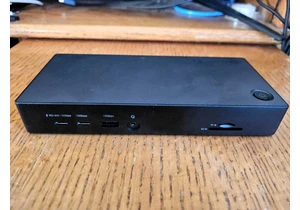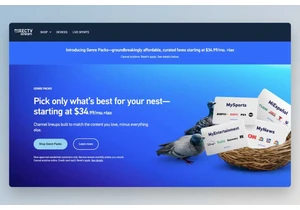As soon as VR headsets started going mainstream, people were wondering if you could use them to replace conventional monitors for an immersive Windows experience. And yes, you can — there are already several ways to do that right now.
But starting in December, Meta’s Quest 3 and Quest 3S headsets will get official support to stream Windows 11, direct from Microsoft. The capability was announced in a post-Ignite news roundup and shown off in a short video, below:
Microsoft’s mockup of the integration between Windows and Quest headsets is impressive. The demo user puts on the headset and almost instantly has access to three virtual monitors floating in space via augmented reality, all wireless and apparently seamless. Alternatively, you can put everything on one giant screen right in front of you.
Both use a familiar VR control panel that floats beneath the virtual displays. The whole thing is reminiscent of Apple’s Vision Pro “yes, you can use this thing for work” videos.
Again, this core capability is not new. Accessing PC content via a standalone VR headset like the Quest is a pretty common thing, though it obviously requires a little more work than on a headset that directly connects to your PC, such as the Valve Index. But at the moment, you still need a bit of third-party software running between them. (Virtual Desktop is a popular option.)
Microsoft baking this capability right into Windows indicates a step closer between the platforms, and it’s a somewhat surprising move from a company that seemed to be stepping back from VR and AR with the close of its HoloLens development. This isn’t just a gimmick, either. Microsoft’s news post says you’ll be able to use the feature with a Windows 365 Cloud PC. So, with a little help from a wireless keyboard and mouse, a Quest headset could essentially be your only PC… if your primary desktop lives in the cloud.
Even as someone who’s very bullish on VR for entertainment, I still can’t see myself working for eight hours with a headset on. (If the headset battery could even last eight hours. It can’t.) But combine this apparently instant and seamless connection with less bulky hardware, like, say, video glasses from Xreal or RayNeo, and suddenly you have an option for a massively powerful augmented reality setup that can easily travel in a space smaller than a laptop, as seen in the Spacetop design.
Assuming that you have a high-speed, always-on connection to a remote machine, of course… and now we’re talking about a lot of different hardware, software, and infrastructure working seamlessly together. Okay, maybe it’s a little farther away than I thought.
You’ll be able to try out this native AR workstation feature on Windows 11 with a Quest 3 or Quest 3S headset starting next month, when it goes into “public preview.”
Login to add comment
Other posts in this group

A lot of gamers go to great lengths to find a portable retro gaming d

As Microsoft Word and PowerPoint continually improve their feature se


Phishing is a favorite tactic of scammers because so many people fall

Okay, it’s time to stop pretending that the “retail price” of a graph


DirecTV is trying to break up the pay TV bundle this year with cheape
